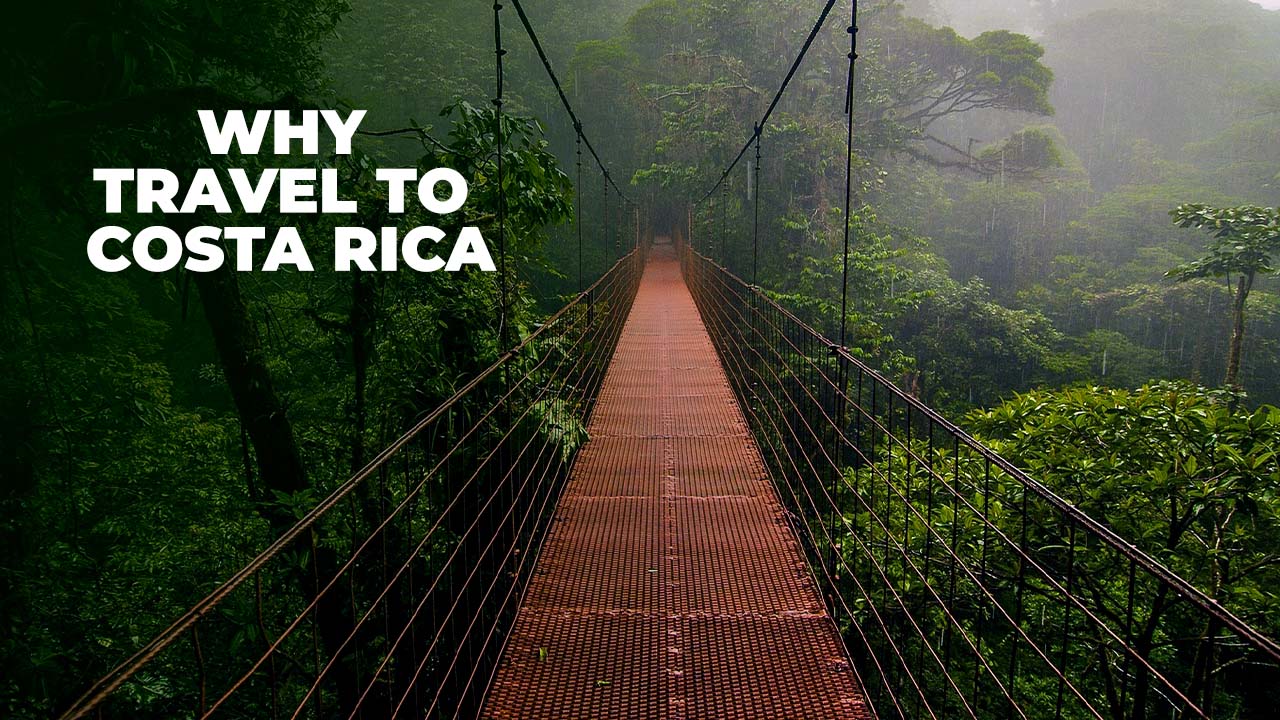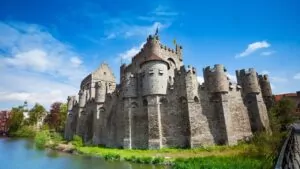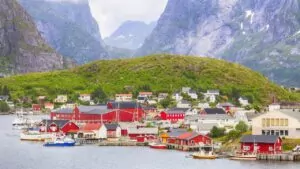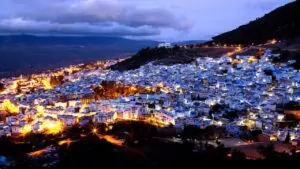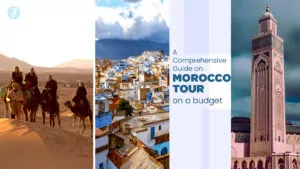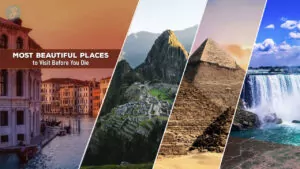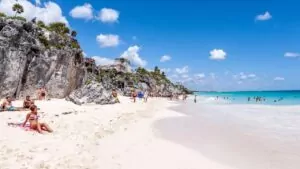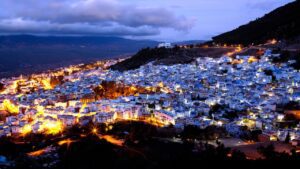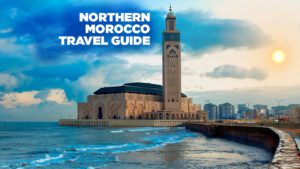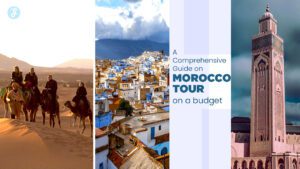Costa Rica stands as a beacon of natural beauty, adventure, and sustainable tourism in Central America. This small yet diverse country offers travelers an unparalleled experience with its lush rainforests, pristine beaches, abundant wildlife, and commitment to environmental conservation. Whether you’re seeking heart-pounding adventures, peaceful relaxation, or meaningful cultural experiences, Costa Rica delivers with its “Pura Vida” philosophy—a way of life that embraces simplicity, well-being, and appreciation for nature. As tourism continues to flourish in this ecological paradise, with over 3 million visitors annually and projections showing significant growth through 2029, now is the perfect time to discover why travel to Costa Rica should top your travel list.
Why Travel to Costa Rica?
Costa Rica occupies just 0.03% of the Earth’s surface but is home to approximately 6% of the world’s biodiversity. This remarkable concentration of plant and animal species makes it one of the most biodiverse countries on the planet. The country’s commitment to conservation is evident in its protection of over 25% of its land as national parks and reserves. With 32 national parks spanning various ecosystems, from cloud forests to coastal areas, travelers have numerous opportunities to experience Costa Rica’s natural wonders.
Natural Wonders and Biodiversity
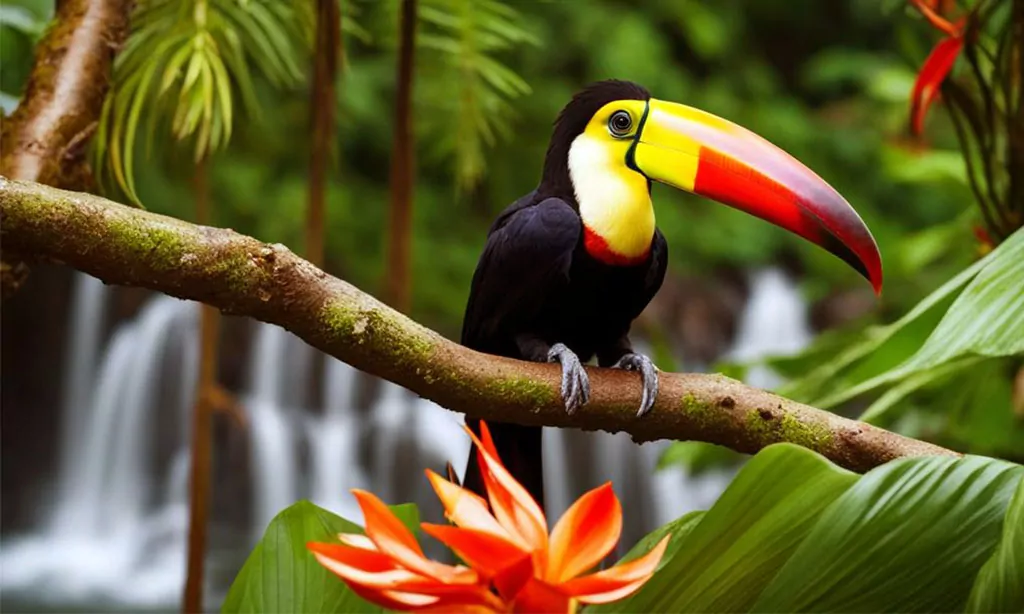
Unparalleled Biodiversity in a Small Package
Costa Rica occupies just 0.03% of the Earth’s surface but is home to approximately 6% of the world’s biodiversity. This remarkable concentration of plant and animal species makes it one of the most biodiverse countries on the planet. The country’s commitment to conservation is evident in its protection of over 25% of its land as national parks and reserves. With 32 national parks spanning various ecosystems, from cloud forests to coastal areas, travelers have numerous opportunities to experience Costa Rica’s natural wonders.
Stunning National Parks and Protected Areas
Costa Rica’s national park system offers visitors access to some of the most pristine natural environments in the world. Arenal Volcano National Park showcases a stunning active volcano surrounded by temperate cloud forest, while Manuel Antonio National Park combines pristine beaches with wildlife-rich forests home to three-toed sloths and endangered white-faced capuchin monkeys. Tortuguero National Park on the Caribbean coast provides critical habitat for endangered sea turtles, offering visitors a chance to witness turtle nesting during certain seasons.
Diverse Ecosystems in Close Proximity
One of Costa Rica’s most appealing aspects is the diversity of ecosystems accessible within short distances. Spanning approximately 200 miles between the Pacific Ocean and the Caribbean Sea, travelers can experience simmering volcanoes, cloud forests, lush rainforests, and picturesque beaches all within a single trip. This geographical advantage allows visitors to maximize their experiences without spending excessive time on transportation.
Adventure and Activities
Adrenaline-Pumping Experiences
Costa Rica has established itself as the adventure capital of Central America, particularly in the Arenal region. Thrill-seekers can enjoy a wide range of activities, including:
- Ziplining through rainforest canopies
- White-water rafting on wild rivers
- Hiking around active volcanoes
- Surfing world-class waves
- Canyoning down waterfalls
- Bungee jumping at Monteverde Extremo
The country’s diverse topography creates perfect conditions for these adventures, with options suitable for beginners and experienced adventurers alike.
Water-Based Activities
With coastlines on both the Pacific Ocean and Caribbean Sea, Costa Rica offers exceptional opportunities for water enthusiasts. The Pacific coast is renowned for its surfing conditions, while both coasts provide excellent snorkeling and diving experiences to explore vibrant marine ecosystems. Inland, rivers like the Río Negro offer tubing adventures through scenic landscapes.
Hiking and Nature Exploration
For those who prefer a more measured pace, Costa Rica’s extensive trail systems provide access to some of the most beautiful landscapes in Central America. The cloud forests of Monteverde, the volcanic terrain of Arenal, and the coastal paths of Manuel Antonio all offer hiking experiences with opportunities to spot wildlife in their natural habitats.
Beaches and Coastal Beauty
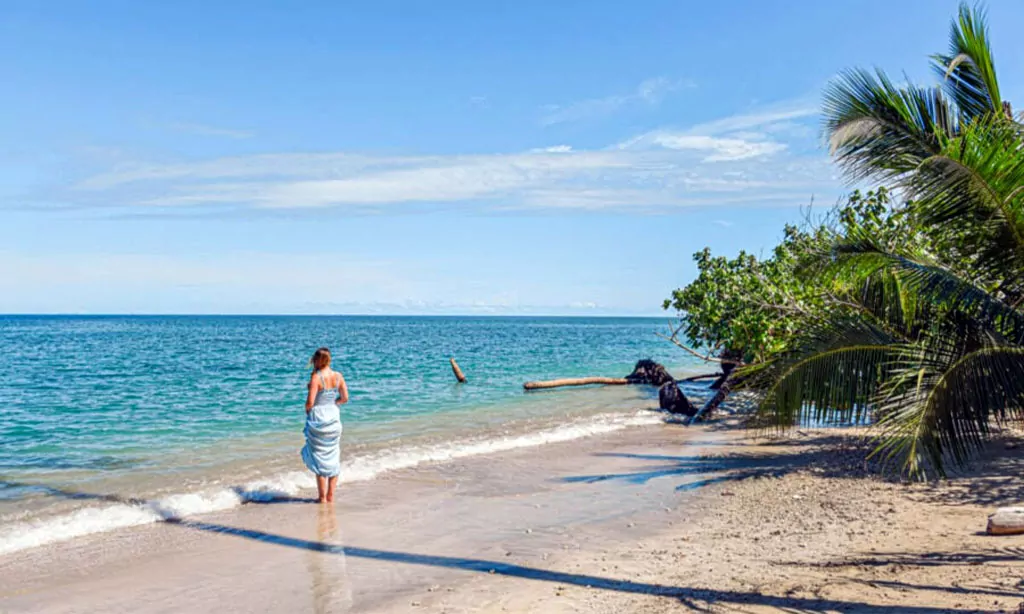
Two Distinct Coastlines
Costa Rica boasts over 800 miles of coastline between its Pacific and Caribbean shores, each with its own distinct character. The Pacific coast features a mix of developed beach towns and secluded coves, while the Caribbean side offers a more laid-back atmosphere with influences from Afro-Caribbean culture.
Beach Activities and Relaxation
Costa Rica’s beaches cater to all preferences, from active pursuits to peaceful relaxation. Visitors can:
- Surf world-class waves at Tamarindo or Jacó
- Swim in protected coves at Manuel Antonio
- Observe nesting sea turtles at Tortuguero
- Enjoy sunset sailing excursions
- Practice yoga with ocean views
- Simply relax on pristine white sand beaches
The country’s commitment to environmental protection ensures that many beaches remain unspoiled and accessible within protected areas.
Sustainable Tourism and Eco-Friendly Practices
Global Leadership in Sustainability
Costa Rica has positioned itself as a global leader in sustainable tourism practices. The country’s commitment to environmental conservation extends to its tourism industry, with many accommodations and tour operators embracing eco-friendly practices. This focus on sustainability allows travelers to enjoy natural beauty while minimizing their environmental impact.
Eco-Lodges and Green Accommodations
Throughout Costa Rica, travelers can find accommodations that prioritize environmental responsibility. Many hotels and lodges use solar power, implement waste management systems, avoid harsh chemicals, and support local communities. These eco-friendly options range from luxury resorts to budget-friendly hostels, making sustainable travel accessible to all types of visitors.
Community-Based Tourism
Costa Rica offers numerous opportunities for travelers to engage with local communities through sustainable tourism initiatives. These experiences provide authentic cultural interactions while ensuring that tourism benefits local residents. Visitors can participate in farm-to-table experiences, traditional craft workshops, and community conservation projects that create meaningful connections with Costa Rican culture.
Wildlife Encounters
Abundant and Accessible Wildlife
Costa Rica’s protected areas provide sanctuary for an incredible variety of wildlife, much of which is relatively easy to observe in natural settings. Visitors commonly encounter:
- Howler, spider, and capuchin monkeys
- Two and three-toed sloths
- Colorful toucans and scarlet macaws
- Resplendent quetzals in cloud forests
- Sea turtles nesting on protected beaches
- Crocodiles in river estuaries
- Countless butterfly and insect species
The country’s small size and well-developed tourism infrastructure make wildlife viewing accessible even for travelers with limited time.
Ethical Wildlife Experiences
Costa Rica emphasizes ethical wildlife encounters that prioritize animal welfare and conservation. Rather than captive animal attractions, visitors are encouraged to observe wildlife in natural habitats through guided tours led by knowledgeable naturalists. This approach supports conservation efforts while providing more authentic and educational experiences.
Embracing Pura Vida
“Pura vida” (pure life) is more than just a marketing slogan—it’s a philosophy that permeates Costa Rican culture. This approach to life emphasizes simplicity, well-being, and appreciation for daily pleasures. Visitors often find themselves embracing this mindset during their stay, returning home with a renewed perspective on what truly matters.
Friendly Local Culture
Costa Ricans, known as Ticos, are renowned for their warmth and hospitality. The country’s stable democracy and absence of a standing army since 1949 have contributed to a peaceful society that welcomes visitors from around the world. This friendly atmosphere makes Costa Rica particularly appealing for solo travelers, families, and those visiting Central America for the first time.
Culinary Experiences
Costa Rican cuisine offers simple yet flavorful dishes based on fresh, local ingredients. Traditional meals typically feature rice, beans, plantains, and proteins, with regional variations throughout the country. Visitors can enjoy authentic food experiences through cooking classes, market tours, and farm visits that highlight the connection between Costa Rica’s agricultural traditions and its culinary heritage.
Practical Travel Considerations
Accessibility and Infrastructure
Costa Rica is served by two international airports—Juan Santamaria International Airport near San José and Liberia International Airport in Guanacaste. Most visitors from North America, Europe, and Australia do not require visas for stays up to 90 days, making entry relatively straightforward. Within the country, a well-developed transportation network of domestic flights, buses, and rental cars makes it possible to navigate between destinations efficiently.
Safety Considerations
While Costa Rica is generally considered one of the safer countries in Central America, travelers should remain vigilant, particularly in urban areas. Common safety concerns include:
- Petty theft in tourist areas
- Unofficial “pirate” taxis, particularly in San José
- Scams involving parking attendants at tourist attractions
- Safety risks during adventure activities
Travelers can mitigate these risks by using official transportation, securing valuables, avoiding isolated areas after dark, and booking activities through reputable providers.
Best Time to Visit
Costa Rica has two distinct seasons: the dry season (December to April) and the wet season (May to November). The dry season coincides with the high tourist season, offering ideal conditions for beach activities and wildlife viewing, though with higher prices and more crowds. The wet season, particularly September and October, sees daily rainfall but offers lush landscapes, fewer tourists, and lower prices. May, June, and November can provide a good balance between favorable weather and moderate crowds.
Economic Impact and Tourism Growth
Tourism’s Role in Costa Rica’s Economy
Tourism has become a cornerstone of Costa Rica’s economy, with significant growth projected in the coming years. The industry is expected to expand by USD 2.04 billion from 2024 to 2029, with a compound annual growth rate of 8%. This growth reflects Costa Rica’s increasing popularity as a destination that balances natural attractions with sustainable practices.
Visitor Statistics and Trends
Costa Rica welcomed 3.14 million international visitors in 2019, making it the most visited nation in Central America. While the COVID-19 pandemic temporarily disrupted this growth, tourism has rebounded strongly. The United States represents the largest source market, accounting for approximately 40% of visitors, followed by Nicaragua, Canada, and European countries. This diverse visitor base contributes to a vibrant tourism ecosystem that supports various travel styles and preferences.
Evolving Tourism Offerings
As Costa Rica’s tourism industry matures, the country has seen growth in specialized travel experiences beyond traditional ecotourism. Luxury and personalized travel options have expanded, along with community-based tourism initiatives that generate positive social impact. These developments provide travelers with more ways to experience Costa Rica while supporting sustainable economic development.
Health and Wellness Tourism
Natural Healing Environments
Costa Rica’s natural environments provide ideal settings for wellness retreats and health-focused travel. The country’s abundant hot springs, particularly around Arenal Volcano, offer natural thermal baths with therapeutic minerals. Combined with the tranquil natural surroundings, these features have made Costa Rica a growing destination for travelers seeking physical and mental rejuvenation.
Yoga and Mindfulness Retreats
The “pura vida” philosophy aligns perfectly with yoga and mindfulness practices, leading to a proliferation of retreat centers throughout the country. Particularly along the Pacific coast in areas like Nosara and Santa Teresa, visitors can find world-class yoga facilities offering everything from drop-in classes to immersive multi-week programs. These retreats often incorporate local natural elements and sustainable practices that complement their wellness focus.
Blue Zone in Nicoya Peninsula
The Nicoya Peninsula is recognized as one of the world’s five “Blue Zones”—regions where people live measurably longer, healthier lives. This designation has attracted health-conscious travelers interested in learning from the lifestyle factors that contribute to longevity, including diet, physical activity, social connections, and stress management techniques.
Challenges and Considerations
Managing Tourism Growth Sustainably
As Costa Rica’s popularity continues to grow, the country faces challenges in balancing tourism development with environmental conservation. Increased visitor numbers put pressure on natural resources and infrastructure, particularly in popular destinations. The government and tourism industry are working to implement strategies that distribute tourism benefits while minimizing negative impacts on ecosystems and communities.
Safety Concerns in Some Areas
While Costa Rica remains relatively safe compared to some neighboring countries, certain areas have experienced increasing crime rates. According to recent reports, locations including Puerto Viejo, Cahuita, Manuel Antonio, and Jacó have seen higher incidents of robbery and attacks against tourists. In 2024, approximately 500 international visitors reported thefts to authorities, with U.S. citizens accounting for the largest number of victims. Travelers should research current safety conditions and take appropriate precautions, particularly in urban areas and popular tourist destinations.
Infrastructure Limitations
Despite improvements in recent years, Costa Rica’s infrastructure still presents challenges in some areas. Road conditions, particularly in rural regions, can be poor during the rainy season. Public transportation, while extensive, may not reach all destinations of interest to travelers. These limitations require flexibility and planning, especially for visitors hoping to explore less-developed regions of the country.
Planning Your Costa Rica Trip
Creating a Balanced Itinerary
Given Costa Rica’s diverse attractions, creating an itinerary that balances different experiences is key to a satisfying trip. Most successful itineraries include:
- At least one volcano or mountain region (Arenal, Monteverde)
- One or more beach destinations (Manuel Antonio, Tamarindo, Puerto Viejo)
- A wildlife-focused experience (Tortuguero, Corcovado)
- Cultural activities in San José or smaller communities
For first-time visitors, focusing on 3-4 destinations within a 1-2 week trip provides enough variety without excessive travel time.
Transportation Options
Costa Rica offers various transportation options to suit different travel styles and budgets:
- Domestic flights: Fast connections between major destinations through airlines like Sansa, Skyway, and Aerobell
- Public buses: Economical option with extensive routes throughout the country
- Shared shuttles: Door-to-door service between popular destinations
- Private transfers: Flexible and comfortable but more expensive
- Rental cars: Provides independence but requires navigation skills and comfort with variable road conditions
The best choice depends on your itinerary, budget, and comfort with independent travel in a foreign country.
Accommodation Choices
Accommodation options in Costa Rica range from budget hostels to luxury eco-lodges, with many emphasizing sustainability regardless of price point. Popular choices include:
- Eco-lodges integrated with natural surroundings
- Boutique hotels in beach towns and mountain communities
- All-inclusive resorts, particularly in Guanacaste
- Vacation rentals for families or longer stays
- Budget-friendly hostels in major tourist destinations
Booking accommodations well in advance is advisable during the high season (December-April) and for properties in popular locations.
Takeaways
Costa Rica offers a unique combination of natural beauty, adventure opportunities, sustainable practices, and welcoming culture that few destinations can match. The country’s commitment to conservation ensures that its remarkable biodiversity remains accessible to travelers while being protected for future generations. From thrilling zipline adventures through cloud forests to peaceful days on pristine beaches, Costa Rica provides experiences that appeal to diverse interests and travel styles.
The “pura vida” philosophy that permeates Costa Rican culture offers visitors more than just a vacation—it provides an opportunity to reconnect with nature, simplify priorities, and embrace a more balanced approach to life. This perspective, combined with the country’s stunning landscapes and abundant wildlife, creates memories that last long after travelers return home.
As tourism in Costa Rica continues to evolve, with projections showing significant growth through 2029, now is an ideal time to experience this remarkable destination. Whether you’re planning your first visit or returning to explore new regions, Costa Rica rewards travelers with authentic experiences that balance adventure, relaxation, and cultural connection in a sustainable framework. The question isn’t really “why travel to Costa Rica?”—it’s “why wait any longer to experience pura vida for yourself?”

